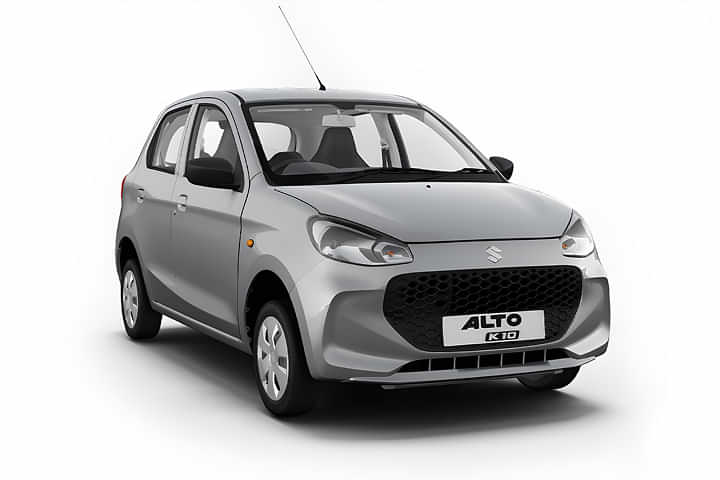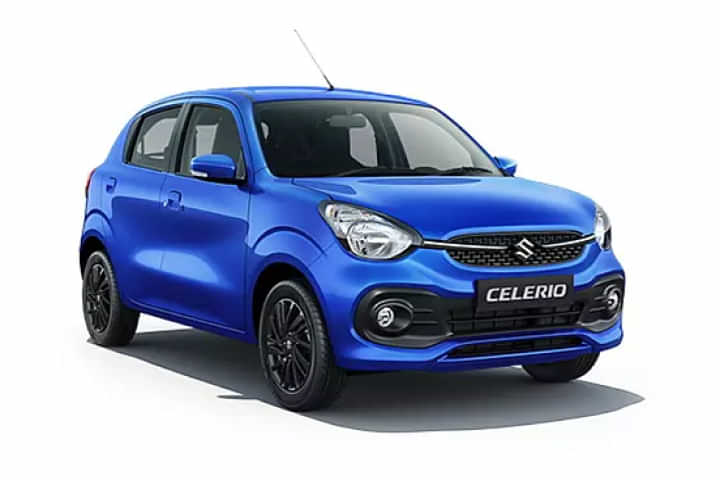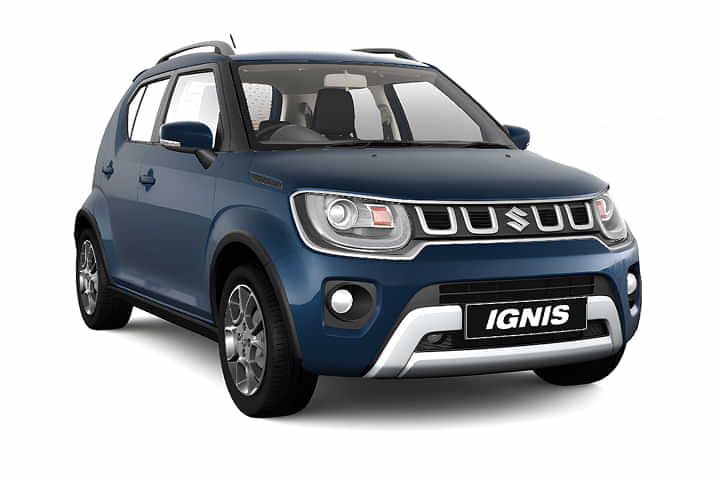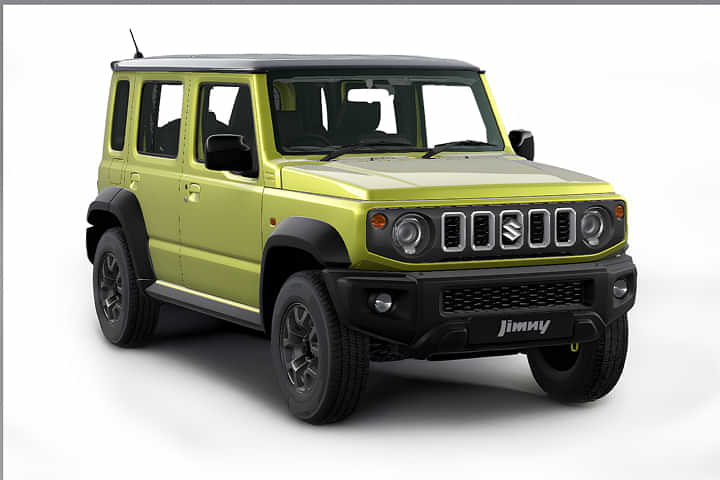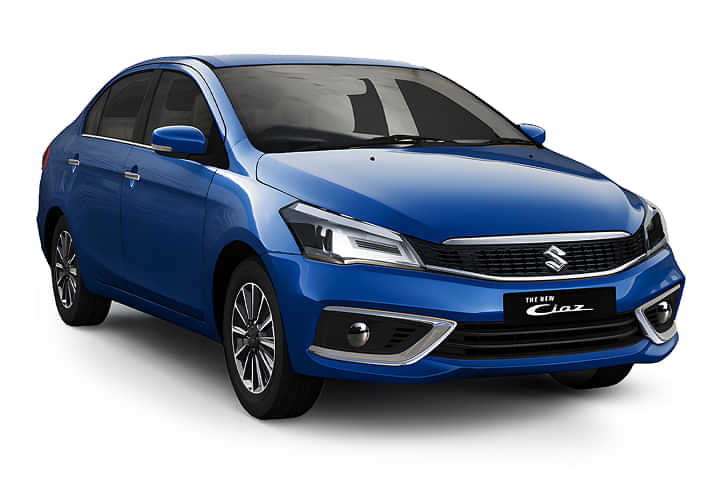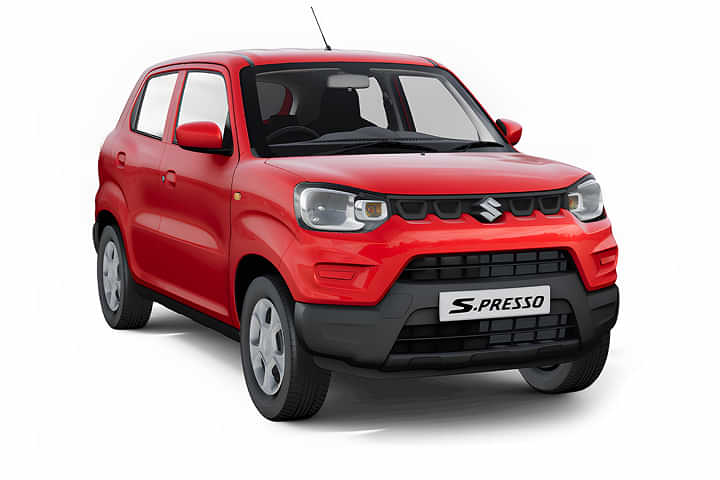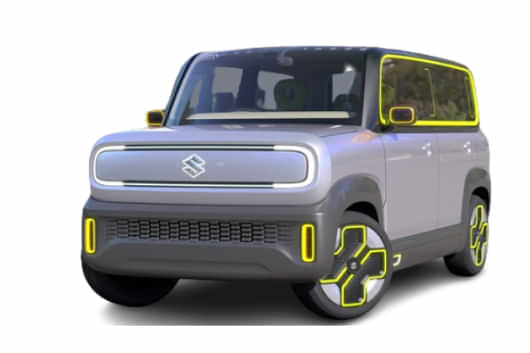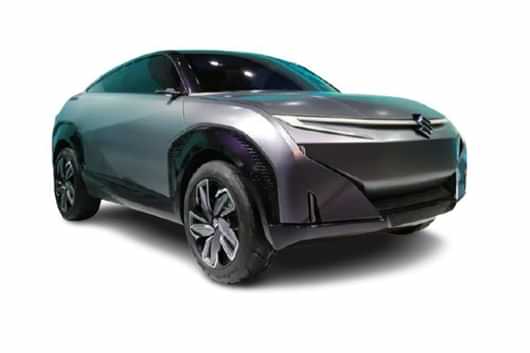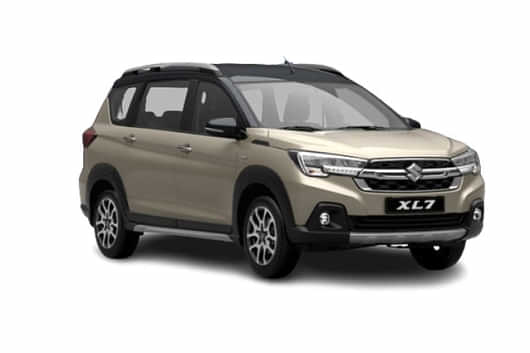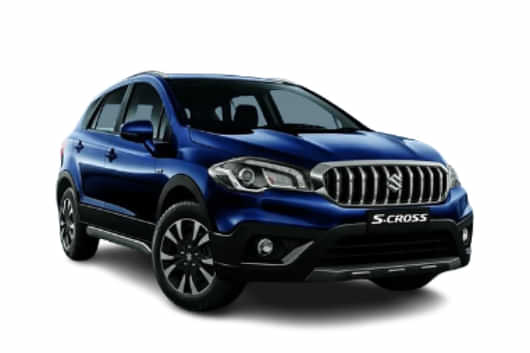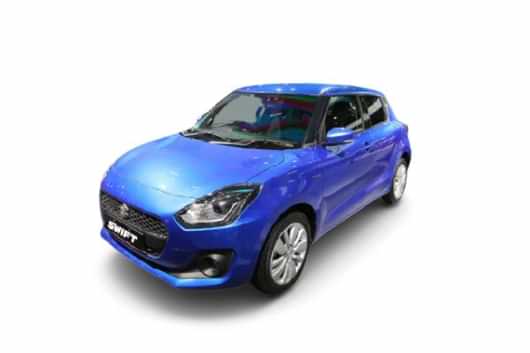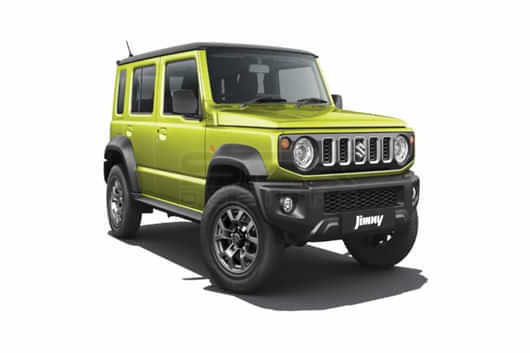Maruti Suzuki Cars
4.2 Avg rating of Maruti Suzuki cars as per 20593 ratings
Of the 18 models, 4 are SUV, 5 are hatchback, 1 are sedan and 2 are MUV.The 8 upcoming models include the E Vitara, Jimny EV, Swift Hybrid, XL7, Futuro E, S-Cross Facelift, eWX and WagonR Electric scheduled to be launched in 2025.
Maruti Suzuki Car Price List (December 2025) in India
The price of Maruti Suzuki cars in India ranges between Rs. 3.50 Lakh to Rs. 28.61 Lakh. Here are the prices of the top 5 Maruti Suzuki cars : Maruti Suzuki Victoris Price at Rs. 10.50 Lakh, Maruti Suzuki Brezza Price at Rs. 8.26 Lakh, Maruti Suzuki Swift Price at Rs. 5.79 Lakh, Maruti Suzuki Dzire Price at Rs. 6.26 Lakh, Maruti Suzuki Grand Vitara Price at Rs. 10.77 Lakh.
| Maruti Suzuki Models | Price (ex-showroom) | Mileage/Range |
|---|---|---|
| Victoris | ₹ 10.50 Lakh* onwards | 28.65 kmpl |
| Brezza | ₹ 8.26 Lakh* onwards | 19.8 kmpl |
| Swift | ₹ 5.79 Lakh* onwards | 25.75 kmpl |
| Dzire | ₹ 6.26 Lakh* onwards | 25.71 kmpl |
| Grand Vitara | ₹ 10.77 Lakh* onwards | 27.97 kmpl |
| Fronx | ₹ 6.85 Lakh* onwards | 20.01 kmpl |
| Baleno | ₹ 6.74 Lakh* onwards | 22.94 kmpl |
| Ertiga | ₹ 8.80 Lakh* onwards | 20.3 kmpl |
| Wagon R | ₹ 4.99 Lakh* onwards | 23.56 kmpl |
| Alto K10 | ₹ 3.70 Lakh* onwards | 24.9 kmpl |
| XL6 | ₹ 11.52 Lakh* onwards | 20.27 kmpl |
| Celerio | ₹ 4.70 Lakh* onwards | 26 kmpl |
| Ignis | ₹ 5.35 Lakh* onwards | 20.89 kmpl |
| Jimny | ₹ 12.31 Lakh* onwards | 16.39 kmpl |
| Ciaz | ₹ 9.09 Lakh* onwards | 20.04 kmpl |
| S-Presso | ₹ 3.50 Lakh* onwards | 25.3 kmpl |
| Invicto | ₹ 24.97 Lakh* onwards | 22.16 kmpl |
| Eeco | ₹ 5.21 Lakh* onwards | 26.78 kmpl |
Maruti Suzuki Cars Price in India
Change brand 4.5₹ 10.50 - ₹ 19.99 Lakh*1490cc 28.65 kmplPetrol, CNG, HybridView December Offers
4.5₹ 10.50 - ₹ 19.99 Lakh*1490cc 28.65 kmplPetrol, CNG, HybridView December Offers

-
Search Maruti Suzuki Cars by Budget

 4.1₹ 10.77 - ₹ 19.72 Lakh*1490cc 27.97 kmplPetrol, Hybrid, CNGView December Offers
4.1₹ 10.77 - ₹ 19.72 Lakh*1490cc 27.97 kmplPetrol, Hybrid, CNGView December Offers
-
Search Maruti Suzuki Cars by Body Type












Upcoming Maruti Suzuki Cars in India
Similar Car by Brand
Add your vehicle to our online garage
- Free valuation of your vehicle
- 1Mn+ users joined our Community
- 10+ experts to give advice
Maruti Suzuki Overview
Brand Overview : Maruti as a car brand is considered as the brainchild of Sanjay Gandhi, the son of former Indian Prime Minister Indira Gandhi. He presented the concept of producing small cars for the Indian masses, which was endorsed by both the Planning Commission and the Government of India. After the approval, Sanjay Gandhi founded Maruti Motors Limited in August 1971, which was followed by the acquisition of 297 acres of land in Gurgaon.
The first prototype of a car from Maruti Motors Limited was introduced in 1971 using a self-built chassis by Sanjay Gandhi and an engine from a Triumph motorcycle. A few production units were made at this factory before Sanjay Gandhi’s involvement in active politics. However, the project faced a lot of roadblocks with events like Maruti’s dissolution in 1978 and the untimely death of Sanjay Gandhi.
However, the project got a fresh lease of life in April 1982 when the Government of India started talks with Suzuki of Japan in April 1982. The series of discussions between the two companies led to the formation joint venture between them, Maruti Udyog Limited, with the Government of India having the controlling stake and Suzuki having a 26 per cent stake in it back then. The first car to come out of Maruti Suzuki was the Maruti 800, a rebadged version of the Suzuki Fronte SS40.
Key Milestones In India : Maruti Suzuki launched the Maruti 800 in December 1983 with its series production at its the-then only production plant in Gurgaon, which was followed by the launch and beginning of series production of the Maruti Omni (a rebadged version of Suzuki Van) in 1984. Suzuki garnered overwhelming bookings for both models, which led to an increase in production and the launch of its third product, the Maruti Suzuki Gypsy (a rebadged version of Suzuki Jimny SJ410), in 1985. In 1987, Maruti Suzuki started exporting cars to other countries, with the first lot of 500 units of Maruti 800 sent to Hungary. The increase in local demand and exports encouraged Maruti Suzuki to increase the production capacity of its Gurgaon plant to 1 lakh units per annum in 1988. The fourth model from the brand was Maruti 1000, the brand’s first-ever sedan During the economic crisis in 1991, Maruti Suzuki faced constraints in securing investments, which forced it to seek foreign aid from Axiom Bank in Japan and start a new production line in Gurgaon to meet the demands. Following the liberalisation of the Indian economy in 1991, Suzuki increased its stake in the joint venture to 50 per cent, making the parent company Maruti Udyog Limited a 50:50 joint venture between the Government of India and Suzuki Motor Corporation. Maruti Suzuki later on launched its fifth model, the Zen, in 1993, followed by the replacement of the Maruti 1000 in the form of its more powerful iteration, the Esteem, in 1994. Following the production of its 1 millionth vehicle in 1994, Maruti Suzuki opened up its second manufacturing facility in Haryana in the same year to meet increased market demand. The later years of the 1990s saw the launches of new models like the all-new iterations of the Maruti 800 and Omni, Zen diesel, WagonR and Baleno sedan. Maruti Suzuki began the 21st century with major milestones like the foundation of Maruti True Value (a separate entity for authorised used car sales), a call centre for customer assistance and new product launches like Alto, Versa and Esteem diesel. In 2002, Suzuki Motor Corporation increased its stake in the joint venture to 54.2 per cent. With Maruti Udyog Limited going public in 2003, the Government of India exited the joint venture, making the Suzuki Motor Corporation the controlling stakeholder of the company.
More product launches from Maruti Suzuki came in the form of Grand Vitara XL7, Swift and facelifts of Zen, WagonR and Esteem. With the implication of Bharat Stage III emission norms, newer models like Estilo, Ritz, SX4, A-Star, Swift Dzire and second-generation WagonR made their way into the Indian market in the later years of the 2000s.
In February 2012, Maruti Suzuki sold its ten millionth vehicle in the country, followed by the production of its fifteen millionth vehicle in 2015. By this time, Maruti Suzuki had a market share of 45 per cent, becoming the biggest player in the Indian automobile industry in terms of production volumes. In April 2019, Maruti Suzuki announced the abolishment of diesel cars from its lineup, with an increased focus on petrol, hybrid, and CNG models.
Product Range And Segments : Maruti Suzuki has the most versatile lineup of small cars in India. The entry-level range of Maruti Suzuki comprises compact hatchbacks like Alto K10, S-Presso, Celerio and WagonR, along with slightly more premium hatchbacks like Ignis, Swift and Baleno in the compact car range. Besides offering compact sedans like Dzire and Ciaz, Maruti Suzuki has increased its focus in the UV range recently, with SUVs like Fronx, Brezza, Jimny and Grand Vitara and MPVs like Ertiga, XL-6 and Invicto. Maruti Suzuki is believed to be working on its first all-electric offering, which is expected to be launched in India in the first half of 2025.
Unique Selling Propositions (USPs) : Maruti Suzuki started its journey in India as a maker of compact cars that scored high on key values like affordability, efficiency and reliability. It is the focus on these attributes that helped Maruti Suzuki become a household name among the Indian people, who wanted a car more as a necessity rather than a luxury. Even today, Maruti Suzuki is perceived as making reliable and fuel-efficient cars. However, with newer models, especially under its NEXA sub-brand, Maruti Suzuki has made a successful transition as a car brand for young buyers who want an aspirational and premium offering.
Technology And Innovation : Maruti Suzuki was one of the first car brands to introduce LPG and diesel models in compact car space, besides offering separate homegrown verticals for used car sales, customer care centres and insurance solutions. In recent years, Maruti Suzuki has managed to fill the space left vacant by diesel technology with newer models that have adapted to the latest developments in CNG and Hybrid technology. Maruti Suzuki is currently the pioneer of CNG and Hybrid vehicles in India, while also looking forward to switching to electric mobility with its first scheduled EV in early 2025.
Sustainability And Future Goals : Despite announcing its plans to venture into the electric mobility space, Maruti Suzuki has made its stand clear on the gradual transition from internal combustion engines to cleaner mobility solutions. Abolishing its plans to manufacture diesel vehicles in 2019, Maruti Suzuki announced that it will first focus on alternate solutions like CNG and Hybrid before transitioning fully to electric vehicles. Maruti Suzuki currently has a versatile lineup of CNG models like Alto K10, S-Presso, WagonR, Swift, Dzire, Baleno, Fronx, Ertiga, Grand Vitara and XL6 and Hybrid models like Grand Vitara and Invicto.
Customer Perception And Competitors : With the largest market share in the passenger vehicle category, Maruti Suzuki has made a significant mark in the Indian automobile industry as the biggest player in compact car space. It currently has the largest lineup of small-sized hatchbacks and SUVs, besides having a couple of compact sedans and MPVs too. All these models are competitively priced, making them hot favourites among both lower and upper-middle-class buyers. The traditional competitors of Maruti Suzuki in the Indian car market are Hyundai, Tata and Honda, with newer brands like Renault, Volkswagen, Skoda and Kia also giving competition in the premium compact car space.
Closing Thoughts : The continued focus on key attributes like reliability, efficiency, low maintenance and cost-effectiveness has helped Maruti Suzuki lead the Indian car market for years. Given its increasing focus on more premium compact and midsize models and CNG and Hybrid technology, Maruti Suzuki is eyeing to continue its leadership in the following years.
Key Highlights of Maruti Suzuki Car
| Popular Models | Victoris, Brezza, Swift, Dzire, Grand Vitara |
| Upcoming Models | E Vitara, eWX, WagonR Electric, Futuro E, XL7 |
| Latest Launched | Victoris |
| Most Expensive | Invicto (₹ 28.61 Lakh) |
| Affordable Model | Victoris (₹ 10.50 Lakh), Brezza (₹ 8.26 Lakh) |
| Lowest Price Model | S-Presso (₹ 3.50 Lakh) |
| CNG Models | Victoris, Brezza, Swift, Dzire, Grand Vitara |
Popular Maruti Suzuki Cars Comparisons
View More Car ComparisonsMaruti Suzuki Car Images
Maruti Suzuki Dealers
View Maruti Suzuki DealersMaruti Suzuki News
View Maruti Suzuki NewsMaruti Suzuki Car Owner Reviews
- GlGadhiraju lokaraju27 Dec 20255.0Review for Maruti Suzuki BrezzaGood mileage and super looks. Heavy sales in India. Low maintenance and comfortable for family. Very good for long journeys. Different variants and color options. Strong body, good height, good performance, and very useful car.LikeReplyRead more
- SSanjay27 Dec 20255.0Review for Maruti Suzuki S-PressoI want to buy it again. It should be cost-effective, slim, easy to drive, low-maintenance, and preferably white. It should have good power and height overall the best in its segment.LikeReplyRead more
- AaAnkit aggarwal26 Dec 20254.8Review for Maruti Suzuki XL6Value for money car. Perfect seating for 6 persons. Great mileage and smooth control. Good pickup. Low maintenance car for middle-class families. Overall, a better option than Ertiga.LikeReplyRead more
- IAInsp Anil Goyal26 Dec 20255.0Review for Maruti Suzuki FronxThe Maruti Fronx is a wonderful car. It is amazing to drive, very comfortable, and looks great. The car is easy to drive and truly beautiful. Thank you.LikeReplyRead more
- MMuhammed26 Dec 20255.0Review for Maruti Suzuki ErtigaThis car is very good. Passengers feel comfortable in it. The drive is smooth. The mileage of this car is very good. It also has a hybrid option. I also own this car.Likes (1)ReplyRead more
- YYudhishthar26 Dec 20255.0Review for Maruti Suzuki Alto K10Best mileage car with very good average. Best price in this segment. Very good family car for city use. Looks very nice for a low segment car. Also good for long drives.LikeReplyRead more
- RURAHUL USRATHE25 Dec 20254.7Review for Maruti Suzuki XL6The XL6 car is the best choice of my life. The driving experience is very good. I am the first owner of this car. Overall, everything is good and trustworthy. Unbelievable experience.LikeReplyRead more
- NsN sai24 Dec 20255.0Review for Maruti Suzuki BrezzaMaruti Brezza is a popular compact SUV. It is easy to drive in city and very comfortable. Ride quality is good and fuel efficiency is also good. Cabin is spacious and reliability is strong. Features like 360-degree camera and sunroof are good.LikeReplyRead more
- MHMEGAVATH HEMLA23 Dec 20255.0Review for Maruti Suzuki BalenoThe car is super. There is no problem with this car. I like this type of car.LikeReplyRead more
- LkLavkush kumar23 Dec 20255.0Review for Maruti Suzuki BalenoBudget ke hisaab se good safety aur features milte hain. Space bhi bahut achha hai. Speakers bahut best hain aur driving ka experience enjoy karte hain. Exterior aur interior dono achhe hain. Overall, nice car.LikeReplyRead more






